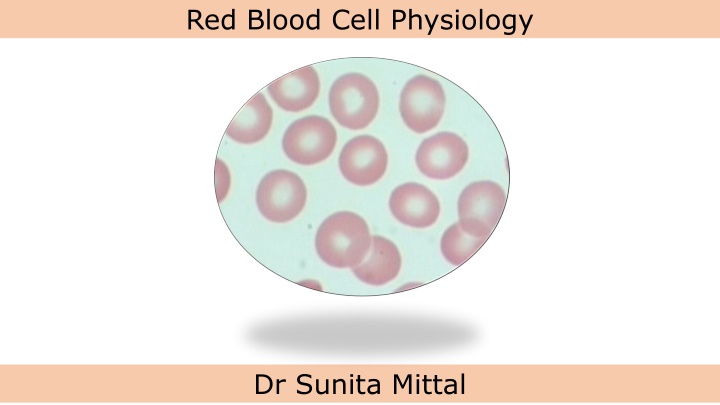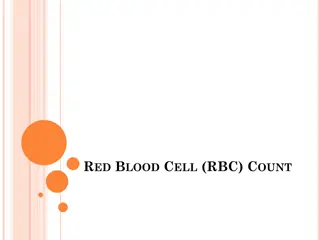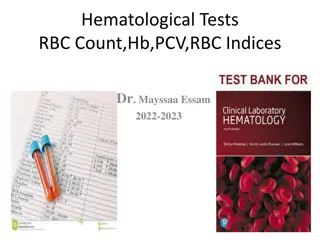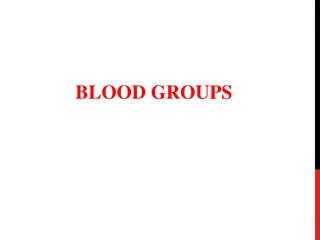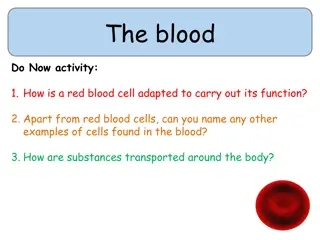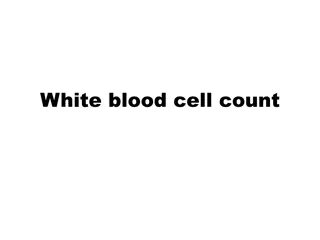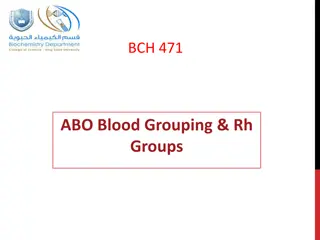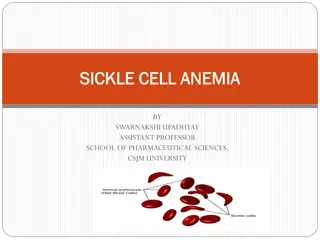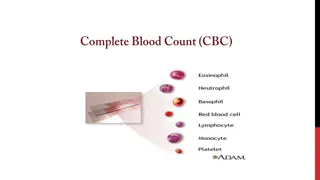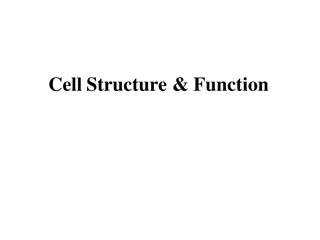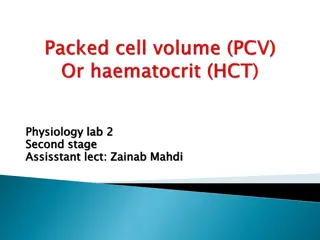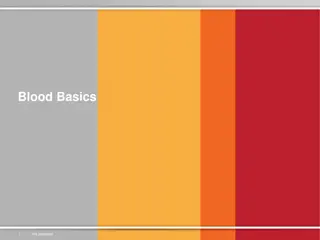Red Blood Cell Physiology
Delve into the world of red blood cells (RBCs) with a focus on their morphology, functions, and hematological indices. Learn about the structure, function, and clinical applications of RBCs, as well as important indices like Mean Corpuscular Volume (MCV) and Mean Corpuscular Hemoglobin (MCH). Explore key concepts such as RBC count, hemoglobin content, and oxygen-carrying capacity, essential for understanding blood cell physiology and diagnostics.
Download Presentation

Please find below an Image/Link to download the presentation.
The content on the website is provided AS IS for your information and personal use only. It may not be sold, licensed, or shared on other websites without obtaining consent from the author.If you encounter any issues during the download, it is possible that the publisher has removed the file from their server.
You are allowed to download the files provided on this website for personal or commercial use, subject to the condition that they are used lawfully. All files are the property of their respective owners.
The content on the website is provided AS IS for your information and personal use only. It may not be sold, licensed, or shared on other websites without obtaining consent from the author.
E N D
Presentation Transcript
Red Blood Cell Physiology Dr Sunita Mittal
Learning Objectives Morphological Features of RBCs Functions of the RBCs Hematological Indices
Red Blood Cells RBC are also known as erythrocytes or red blood corpuscles as it contains haemoglobin which turns red on binding with oxygen. It also carries carbon dioxide away from tissues to lungs. It contains certain antigens on its surface membrane that determine blood groups and makes basis of whole blood transfusion physiology.
Red Blood Cells Clinical Application : Since RBC uses glucose constantly from plasma, whenever blood glucose level is to be tested, the sample is taken in the fluoride vial
Red Blood Cells- Morphology-Size RBCs are anucleated discs RBC count : 4-6 million/mm3, Life span - 120 days. Central pallor is seen due to presence of less haemoglobin molecule in the centre. Size Diameter: 7-7.8 m, Thickness at the periphery-2.2 m and Centre - 1 m
Red Blood Cells- Shape Shape - Normal biconcave disc Biconcave shape has many advantages: 1. Flexibility RBCs 2. Greater surface area/volume ratio
Red Blood Cells- Normal values RBCs Count-4-6 million/mm 3 Hb content-14-16 gm/dl O2 carrying Capacity of blood-1 gm Hb binds to 1.34 ml of O2 PCV=45 2 ml/100 ml of blood
Hematological Indices Red blood cell indices are blood tests that provide information about the average volume or size (MCV) and hemoglobin content (MCH, MCHC) of red blood cell.
Mean Corpuscular Volume (MCV) Mean corpuscular volume (MCV) is the average volume of a single rbc. We need values of: RBC count PCV = PCV X 10 RBCs = 80-100
Mean Corpuscular Hemoglobin (MCH) Mean corpuscular hemoglobin (MCH) is the average amount of hemoglobin of a single rbc. We need values of: RBC count Hb = Hb X 10 pg RBCs = 27-32 pg
Mean Corpuscular Hemoglobin Conc. (MCHC) Mean corpuscular hemoglobin Concentration (MCHC) is the average concentration of hemoglobin per unit volume of red blood cells. We need values of: PCV Hb = Hb X 100 g PCV 32-36 %
Self Asessment What is normal RBC Count- a. 4000-6000/mm3 b. 4lac-6 lac/mm3 c. 4 million to 6 million/mm3 d. 4 billion to 6 billion/mm3 What is the life span of RBCs- a. 1 month b. 2 months c. 3 months d. 4 months What is the term used to describe a cell of normal color? A.-Normochromic B. Hypochromic C. Polychromic D Euchromic
Self Asessment What are the formula and normal value of MCV------------------------------- What are the formula and normal value of MCH------------------------------- What are the formula and normal value of MCHC----------------------------- What are the causes of Normocytic normochromic anemia----------------- What are the causes of Microcytic hypochromic anemia--------------------- What are the causes of Macrocytic anemia----------------------------------
